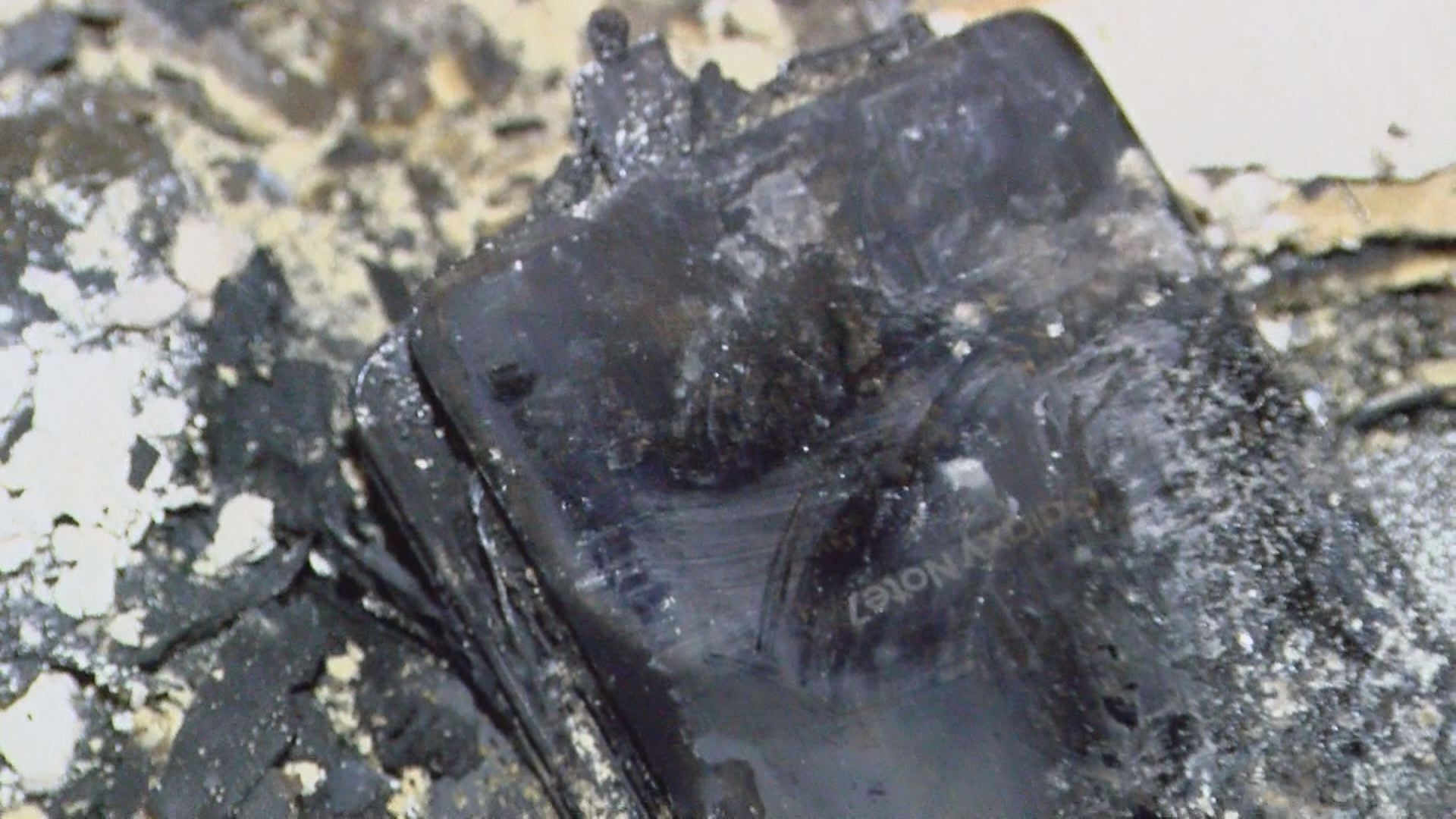News
You should replace your Samsung Galaxy Note 7 before it’s too late

As you might have heard, Samsung’s best phone ever is literally exploding around the world. The chances of you owning an unsafe unit are slim – Samsung claims only one in every 42,000 units are affected – but the inconvenience of replacing your Galaxy Note 7 or asking for a refund shouldn’t hold you back. Take the latest incidents as examples.
In what seems to be the most damaging instance yet, a man’s garage in Horry County, South Carolina caught fire while charging his Galaxy Note 7 two days ago. The scare happened as Wesley Hartzog came back to his home after leaving his Samsung phone charging in the room. The source of damage was found to be near the electric socket used to charge the handset, leading to the speculation. No one was injured, but Hartzog and his family are now forced to live in hotels while repairs are made.
Another similarly scary case also happened two days ago in St. Petersburg, Florida, where another man lost his Jeep Grand Cherokee to a fire. The cause is centered around the Galaxy Note 7 Nathan Dornacher left charging inside the vehicle, as he and his wife were unloading a desk they bought from a yard sale. While you shouldn’t leave a phone charging in a car under the scorching sun, a handset shouldn’t explode strong enough to destroy a large SUV either. Again, luckily, no was harmed.
The situation has become so bad that the U.S. Federal Aviation Administration (FAA) sent out a statement advising Galaxy Note 7 users against charging or even turning on their phones while in flight. Despite there being only 35 reported incidents as of September 1 (doesn’t include the two reported here), the FAA is taking no risks, and considers the Samsung phone a possible explosive. To make matters worse, the U.S. Consumer Product Safety Commission (CPSC) urges consumers who own a Samsung Galaxy Note 7 to “power them down and stop charging or using the device.” Samsung is agreeing with the CPSC, and is asking users to exchange their phones right away.
So, what exactly is causing the explosions? Samsung UK explained that it’s an issue with the battery cell, wherein overheating occurs when the anode-to-cathode comes into contact, which is a “very rare manufacturing error.”
We recently explained how to tell if your Galaxy Note 7 is safe or a possible hazard, and we also covered the replacement process for customers in the Philippines. Our advice is to choose the latter option before any more unnecessary accidents arise.
[irp posts=”9766″ name=”Everything you need to know about the Note 7 investigation”]

News
Xiaomi Redmi A3 Philippine pricing, availability
Budget smartphone with high refresh rate display

Xiaomi is bringing high refresh rate displays to its budget line with the announcement of the Redmi A3. The latest addition to the entry-level Redmi line boasts of an expansive 6.71-inch HD+ display with up to a 90Hz refresh rate.
The Redmi A3 is available in Midnight Black, Star Blue, and Forest Green. The smartphone is priced at PhP 3,399 (3GB+64GB) and PhP 3,999 (4GB+128GB) respectively for its two configurations.
Customers may preorder the phone until April 27 via Lazada, Shopee, and TikTok. General sale begins April 26th in all Xiaomi stores nationwide. Freebies are a Basic Piston Earphone for online purchases and a 3-month Viu Premium subscription for in-store purchases.
The Redmi A3’s immersive screen allows users to consume various content in high-definition with better smoothness, a boost for a phone of its price point. The screen has Corning Gorilla Glass 3 protection as well, and DC dimming to reduce blue light exposure.
The phone also sports a refined design that lets go of the iPhone-looking camera arrangement. Instead, the main camera is now in the middle as part of a watch face-looking setup similar to other Android phone offerings.
Speaking of, an 8MP main shooter highlights the back of the Redmi A3. In front is a 5MP front camera. The phone is powered by a MediaTek Helio G36 processor and runs on an Android 14-based OS. Furthermore, it has a 5,000mAh battery with 10W of USB-C charging.
Other handy Redmi A3 features for users to utilize include a 3.5mm jack, Face Unlock, and Fingerprint Unlock.
For the longest time, Google kept Pixel and Android behind two different teams. While the Pixel team dealt with devices made by and for the brand, the Android team ships a product meant for brands outside of the company’s purview. However, the days of separation are at an end. Google is officially merging its Pixel and Android teams together.
In a shocking announcement, the company has confirmed that the teams handling hardware and software will fall under a single team headed by Rick Osterloh. Prior to the merge, Osterloh was the senior vice president of devices and service, which was Google’s hardware branch. He will now oversee both hardware and software.
Because of the new leadership change, Hiroshi Lockheimer, former head of Android, will now move on to other projects within Alphabet. Of note, the change is not harsh for Lockheimer. He and Osterloh had been contemplating on the merge for a while.
Now, why the change? As is the case with everything today, it’s all because of AI. Speaking to The Verge, Osterloh explains that the merge will help with “full-stack innovation.” With how technology is these days, it’s now impossible to develop AI without having a close eye on hardware, such as in Google’s AI developments for the Pixel camera. Merging the teams will help streamline development, especially when hardware is involved.
Despite the change, outside brands, like Qualcomm’s Cristiano Amon, remains confident of Android’s capabilities outside of Google. Just expect more AI coming out in the near future.
Since the Pixel 6 series, Google continues to wow the market as one of the most unique camera designs available in the market today. This year, the brand’s Pixel 9 series might reinvent itself again with a slightly updated redesign.
Between the Pixel 6 and Pixel 8 series, Google introduced a wraparound camera island extending from the left edge to the right edge. While most smartphones today still use the traditional top-left island layout, Google’s lineup consistently grabs admiration from onlookers.
Now, according to an early leak (from Rozetked, via 9to5Google), Google might cut the camera island’s size before it reaches either side of the Pixel 9. The remaining chunk looks like a horizontal pill-shaped camera island right in the middle of the rear panel. It looks like a common camera island comically enlarged and turned on its side. Alternatively, it also looks like a webcam attached to a phone.
Based on the new leak, the new camera island will have three unknown lenses, the usual LED flash, and an unconfirmed sensor. Besides the different camera, the leak also confirms the usual tray of hardware on the side. There’s nothing too revolutionary.
As always, the Pixel 9 series is scheduled to come out in the fall of this year.
SEE ALSO: Pixel 9 series will reportedly come in four models
-

 Features1 week ago
Features1 week agoFortify your home office or business setup with these devices
-

 Events2 weeks ago
Events2 weeks agoStellar Blade: PlayStation taps cosplayers to play Eve for game’s launch
-

 Gaming2 weeks ago
Gaming2 weeks agoThe Rogue Prince of Persia looks like an ultra-colorful roguelite
-

 Accessories2 weeks ago
Accessories2 weeks agoLogitech unveils G Pro X 60 gaming keyboard: Price, details
-

 Gaming2 weeks ago
Gaming2 weeks agoStar Wars Outlaws release date revealed
-

 Reviews1 week ago
Reviews1 week agorealme 12+ 5G review: One month later
-

 Gaming2 weeks ago
Gaming2 weeks agoLenovo confirms development of a Legion Go 2
-

 Deals2 weeks ago
Deals2 weeks agoTCL P635 TV: Big savings for TCL’s anniversary

























